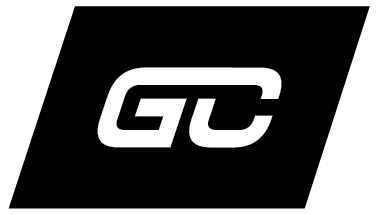Discontinuous Change in Pro Sport
Always Be Ready to Hunt Squirrel
Success in elite athletics depends on the creation of false constructs. Elite and professional athletes must block out doubt, performance anxieties, familial challenges, interpersonal issues with teammates and managers or coaches and a multitude of other issues.
Athletes at the highest levels must deal with enormous amounts of pressure to perform, public scrutiny and media attention. To do this athletes must create processes, personal narratives and other conceptual frameworks that allow them to manage these challenges. These frameworks aren’t developed overnight.
Incrementally, as athletes become more comfortable in their respective athletic roles, they learn to deal with the familial challenges, media glare and how to prepare to perform at their peak on a consistent basis (the big caveat being they figure this out before they are released, cut, injured, etc., but in this instance, let’s assume best case scenario). In essence, this is the rookie athlete learning the ropes early in his career and evolving both as an athlete and a person.
The key word is ‘incremental.’ In the context of the athletes playing career, this learning phase is arguably incremental and continuous.
A discussion of ‘continuous’ and ‘incremental, allows me to introduce the concept of ‘discontinuous change.’ Discontinuous change is an unexpected, sudden or dramatic change, driven by external forces that threaten traditional or current structures or processes that have existed for an extended period.
Flex your imagination for a moment. An over the top example; imagine all grocery stores simply ceased to operate. For those of us used to a trip to the grocery store to get our food stuffs, the idea of chasing squirrels in the front yard for food would constitute a massive discontinuous change in your food acquisition model. In a more traditional career context, imagine an accountant who has been working her entire life, shows up to work one day and her boss informs her that her accounting career is over and that she is now in charge of all things related to pastry. And, by the way, you are not allowed to ever come back to the accounting office or any other accounting office anywhere. Ever.
Athletes live this reality. They invest entirely in a sports career from a young age, in many cases to the detriment of their personal development. And then in the overwhelming majority of cases, an external force or entity (e,g. coach, manager, injury) ends their sports career. Up until the athlete is told it is over or no contract is forthcoming, the athlete is living in a ‘continuous environment.’ The moment the door to the playing surfaces closes...welcome, to discontinuous change. We hope you like squirrel.
Every single ritual, action, process, schedule, construct and approach the athlete utilized to drive success on the playing surface is now in a genuine sense, effectively useless.
“Quick sidebar. Let’s be clear here, of course; athletes have skills that carry over beyond athletics. Many of those transferable skills are soft skills. We see this at GC all the time. If athletes wait until sport is over, identifying and growing these skills and most critically, understanding how they apply beyond athletics, is a massive missed opportunity. The market for engineers that can run fast or lawyers with great arms is very niche.”
Even the people the athlete socialized with on a professional and personal level, cease to be part of the players daily life (teammates, doctors, trainers, equipment managers, community/public relations staff, agents, physical therapists, coaches, managers, etc.). The isolation athletes face is real and can be exacerbated by injury, an acute loss of identity and a calendar that seems to be unendingly blank.
Discontinuous change is notable because it is unexpected. Grocery stores closing is unexpected. An accountant being told to make croissants is unexpected. An EMP pulse from deep space shutting down the power grid…unexpected. However, for elite and professional athletes, sports remains undefeated. No one has ever outlasted the game. If you expect to play forever, you are delusional.
A key is a proactive approach. Actively leaning into this worldview, can make the challenge of discontinuous change manageable. Athletes must internalize the reality that their world can be thrown into upheaval by a future ‘known’ yet still unexpected event that is driven by external forces out of their control.
The key for athletes is to remember those who proactively engage in the mitigation of their discontinuous change risk are more likely to delay the onset of the discontinuous change paradigm. Active engagement in preparing for the eventual worst-case scenario is, in fact, creating an athlete who is more likely to play longer, earn more money and suffer less stress during the career.
In other words, build awesome squirrel traps before you need them.
Discontinuous change is real, inside and outside of sport. Outside of sport, we can debate the societal impact of a supervolcano eruption, massive climate change or the consequences of a solar flare wiping out the power grid. We can put off that debate because it seems like a distant and challenging problem to quantify.
Athletes have a clear advantage, massive disruption in their lives is inevitable. Prepare for it now. And realize the outsized benefits. Not having to eat squirrel as it were.
Game Change was founded in 2011 to serve and enhance the athlete development needs of major professional and elite sport organizations and athletes. Game Change specializes in customized research and assessment services, the development of applied interventions and resources designed to provide long-term positive outcomes for organizations and individual athletes. Game Change believes strongly in sport as a catalyst for societal change and adheres to the philosophy of ‘changing the world one athlete at a time’.


